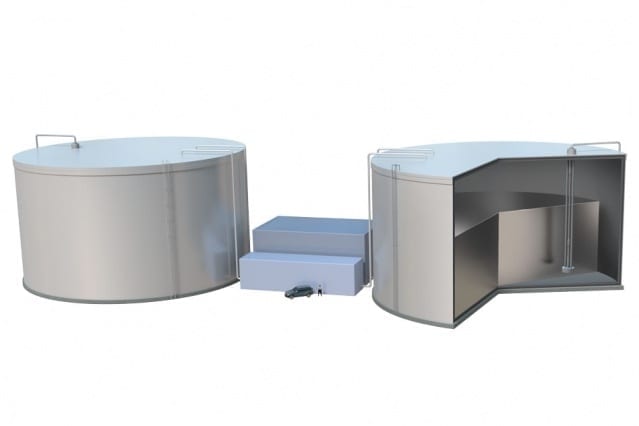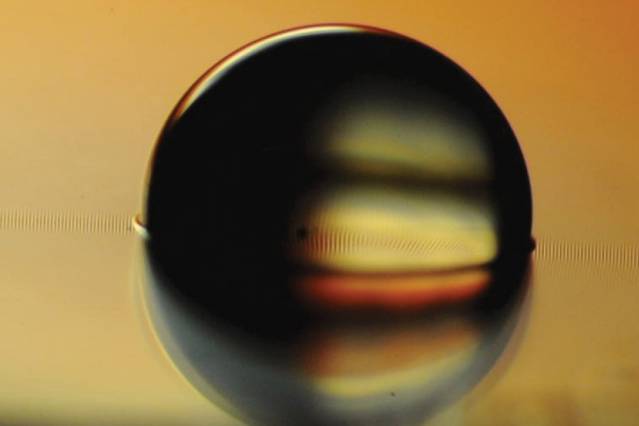
“Running at lower temperatures can make a big difference for sodium-beta batteries and may enable batteries to store more renewable energy and strengthen the power grid”
New liquid alloy electrode improves sodium-beta battery performance
Sun, wind and other renewable energy sources could make up a larger portion of the electricity America consumes if better batteries could be built to store the intermittent energy for cloudy, windless days. Now a new material could allow more utilities to store large amounts of renewable energy and make the nation’s power system more reliable and resilient.
A paper published today in Nature Communications describes an electrode made of a liquid metal alloy that enables sodium-beta batteries to operate at significantly lower temperatures. The new electrode enables sodium-beta batteries to last longer, helps streamline their manufacturing process and reduces the risk of accidental fire.
“Running at lower temperatures can make a big difference for sodium-beta batteries and may enable batteries to store more renewable energy and strengthen the power grid,” said material scientist Xiaochuan Lu of the Department of Energy’s Pacific Northwest National Laboratory.
Need for energy storage, but challenges remain
More than 300 megawatts of large, cargo container-sized sodium-beta batteries are running in the United States, Japan and Europe,according to Dupont Energy Consulting. They often store electricity generated by rows of solar panels and wind turbines.
But their broader use has been limited because of their high operating temperature, which reaches up to 350 degrees Celsius, or more than three times the boiling point of water. Such high operating temperatures requires sodium-beta batteries to use more expensive materials and shortens their operating lifespans. PNNL researchers set out to reduce the battery’s operating temperature, knowing that could make the battery more efficient and last longer.
Read more . . .
The Latest on: Renewable energy storage
[google_news title=”” keyword=”Renewable energy storage” num_posts=”10″ blurb_length=”0″ show_thumb=”left”]
via Google News
The Latest on: Renewable energy storage
- Malaysia to receive $10bn investment from ACWA Power in renewable energy sectoron May 1, 2024 at 1:09 am
Saudi utility firm ACWA Power has expressed interest in investing $10 billion in Malaysia over the next 10 years to develop renewable energy projects.Ac ...
- Why energy storage is key to global renewable goalson April 30, 2024 at 11:54 pm
Batteries have been central to the rise of electric vehicles (EVs) but are also critical to wind and solar power because of the intermittent nature of these energy sources.
- The ROI of solar: Why Austin businesses are investing in renewable energyon April 30, 2024 at 5:00 pm
For businesses considering renewable energy, Austin Energy’s solar solutions offer a ... with new panels offering higher efficiencies and the potential for storage solutions. These advancements make ...
- “AI Energy” & Energy Storage: A $40 Trillion Market Disruptoron April 30, 2024 at 11:00 am
The global energy storage market is set to add 50 gigawatts of capacity in 2024, all thanks to artificial intelligence. We call it AI Energy.
- New sodium-ion battery tech boosts green energy storage affordabilityon April 30, 2024 at 10:10 am
In an advance for energy-storage technologies, researchers have developed high ionic-conductivity solid-state electrolytes for sodium-ion batteries that dramatically enhance performance at room ...
- G7 ministers: Energy storage is key to global renewable goalson April 30, 2024 at 7:24 am
Surplus electricity must be stored in batteries to stabilize distribution regardless of peaks in demand, or breaks in supply at night or during low winds ...
- Reimagining energy: How former fossil fuel sites are driving the renewable revolutionon April 30, 2024 at 6:28 am
These include renewable wave energy generation, supporting offshore wind farms, and potential roles in carbon capture and storage projects, reflecting the industry’s commitment to sustainable ...
- HydroGraph to Supply Pristine Graphene to Volfpack Energy for Solar Power Battery Storageon April 30, 2024 at 5:20 am
HydroGraph Clean Power Inc. (CSE: HG) (OTCQB: HGCPF) (the “Company” or “HydroGraph”), a commercial manufacturer of pristine graphene, announced today that its flagship graphene product, FGA-1, has ...
- Drax Partners with ANDRITZ to Boost Renewable Energy Capacity at Cruachan Pumped Storage Planton April 30, 2024 at 3:09 am
Renewable energy company Drax has selected international technology group ANDRITZ as the main contractor for the upgrade of its Cruachan pumped s ...
- Nevada put big battery energy storage where a coal plant used to beon April 29, 2024 at 4:31 pm
Nevada utility NV Energy's largest battery energy storage system sits on a former coal-fired power plant site and will save customers a lot of money.
via Bing News










